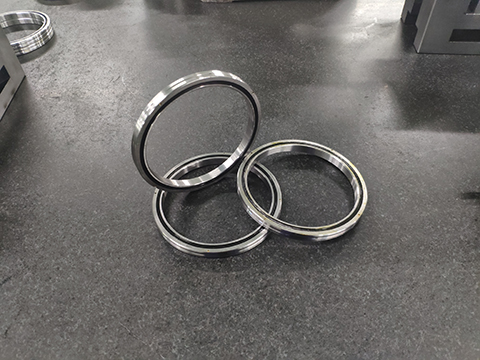Product FAQ
How to adjust the bearing clearance?
Adjustment of bearing axial clearance
The inner ring of the bearing is positioned by the shaft shoulder, and the outer ring is preloaded by the bearing glands on both sides. The axial clearance of the bearing is adjusted by the pretightening force of the bearing glands on both sides. Taking into account the clearance caused by the heat of the bearing To reduce the bearing, there should be a certain amount of clearance in the axial direction of the bearing. There is no relevant national standard for the axial clearance of the bearing.
In practice, the axial clearance is less affected by factors such as interference assembly and load operation. Therefore, during installation, the original clearance of the bearing is generally used as the standard for adjustment.
Specific adjustment method: When the reducer is not covered with an upper cover, install the shaft assembly in place, tighten the gland bolts on both sides of the bearing in place, and then apply a certain amount of axial pressure on one end of the shaft.
The size of this axial force can be determined by referring to the axial force that the shaft bears during operation. Then use a feeler gauge to measure clearance 1 and clearance 2. After the measurement is completed, calculate the sum of clearance 1 and clearance 2, and compare it with the original clearance measured by the bearing. Compare and ensure that the difference between the two is within ±40μm. If the requirements cannot be met, you can adjust by adding adjustment pads until the requirements are met.
Adjustment of bearing radial clearance
The radial clearance of the bearing plays a vital role in the stable operation of the bearing. For the radial clearance of the bearing, GB/T4604-2006 has relevant standards. Therefore, in specific applications, you only need to look up the table to know The upper and lower limits of the bearing's radial clearance.
The specific adjustment method: In order to facilitate measurement, the glands on both sides of the bearing should be removed before adjustment, install the bearing on the bearing seat, cover the upper cover, and use a torque wrench to evenly tighten the 4 fastening bolts on both sides of the bearing. The bolts are pre-tightened. The force can refer to the relevant provisions of the national standards. After tightening in place, use a feeler gauge to measure, and compare the measured value with the standard value in the table.
Example: Bearing model 23232CC/W33. According to GB/T4604-2006, the maximum radial clearance of this bearing is 110 μm and the minimum value is 75 μm. Adjust the bearing clearance through the comparison results. If the adjustment value is less than the minimum value, it means that the bearing installation clearance is too small and the clearance should be increased, as shown in the bearing installation diagram (axial direction). Copper sheets can be placed in the bolt holes on the upper and lower joint surfaces of the bearing box for adjustment. If the adjustment value is greater than the maximum value, the bearing installation clearance is too large.
The adjustment method is to put a copper sheet on the joint surface of the bearing box and the bearing outer ring for adjustment. Be careful not to block the oil hole of the bearing when placing the copper sheet. The above method generally requires multiple adjustments to adjust the bearing radial clearance to the standard range. After the clearance adjustment reaches the standard, reinstall it.

Categories
News
Contact Us
Contact: YRT Rotary Table Bearing|Crossed Roller Bearing|Luoyang Hongyuan Bearing 【HONB】
Phone: 13653797636
Tel: 400-037-9586
E-mail: lyhyzc7@gmail.com
Add: Chuangye road, Konggang Industrial cluster district,Luoyang city, Henan province, China